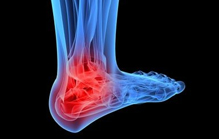
Heel Spur
If you have been diagnoses with a Heel Spur then you will mostly have an X-Ray showing it. Heel Spurs rarely cause pain, they are the result of inflammation to that site, most commonly caused by the Plantar Fascia (refer to Plantar Fasciitis Treatment). You can have a plantar heel spur (under the heel) or a posterior heel spur (at the back of the heel), sometimes you can have both.
Heel Spur Treatment
Heel spur treatment, regardless of location, is designed to stop the inflammation and irritation to the site. Once we know why the tendon or fascia is causing irritation to the site we can stop the pain. We will not be looking to remove the spur, surgically or otherwise. Don’t be too concerned about the Spur itself, it’s not the problem.
Bone Spur Facts
- A bone spur is a tiny pointed outgrowth of bone.
- Bone spurs are usually caused by local inflammation.
- Bone spurs develop in areas of inflammation or injury of nearby cartilage or tendons.
- Bone spurs can be associated with pain, numbness, tenderness, and weakness if they are irritating adjacent tissues.
- Bone spurs are detected by radiologic testing, such as with plain X-rays, ultrasound imaging, MRI scan, CT scan, and myelograms.
- Bone spurs are treated only if they are causing symptoms. Initial treatment is directed toward decreasing inflammation and avoiding re-injury.
If you need more information about heel spur treatment, contact us now. We’d be happy to answer you questions.
